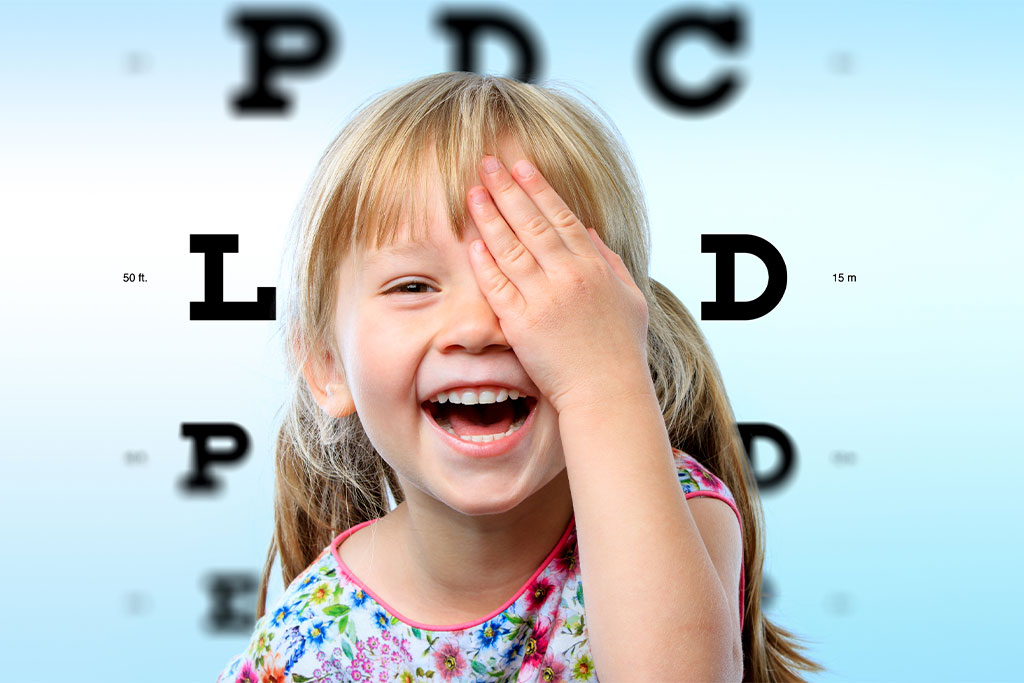2022 has been designated The Year of Children’s Vision, and this month is Children’s Eye Health and Safety Month — just in time for the new school year. Vision and eye problems can have a huge impact on a child’s success in academic and extracurricular activities. This August, make your kids’ eye health a priority and get them prepared for the school year — and a lifetime of good eye health.
Purpose of The Year of Children’s Vision and Children’s Eye Health and Safety Month
Established in 1908, Prevent Blindness is a non-profit organization whose stated mission is to prevent blindness and preserve sight. As part of that mission, it has named 2022 “The Year of Children’s Vision” and is providing the public with free resources — such as fact sheets, webinars, and tool kits — to educate people on how to practice and promote children’s eye health. Children’s Eye Health and Safety Month is meant to promote education about healthy vision, early detection and treatment of potential vision problems, and the prevention of children’s eye injuries.
The National Center for Children’s Vision and Eye Health at Prevent Blindness (NCCVEH) has a whole library of resources available, where parents, caregivers, educators, and health care professionals can find information about:
- Vision Screening — including recommendations by age, screening tools and referrals, and evaluation checklists
- Connecting to Eye Care Professionals — including organizations and associations, as well as information about financial assistance
- General Eye Health and Safety — including fact sheets
- Material From Past Conferences — including handouts, transcripts, and slides
Vision Skills: Crucial for Students

One in four children has a vision problem. Vision problems can cause eye strain, headaches, and even fatigue and can significantly affect a student’s ability to learn. This is because 80% of the information presented to students in the classroom is done so visually. Not surprisingly, 60% of children with learning disabilities suffer from a vision problem that has been undetected.
Most people think of good vision as having 20/20 eyesight, but it’s a lot more than that. Vision includes the following abilities:
- Eye Tracking — keeping eyes on target
- Eye Focusing — maintaining clear sight from object to object
- Eye Teaming — coordinating use of both eyes so that they both move to the same targets
- Hand-Eye Coordination — directing the hands by using visual cues and information
- Visual Perception — deciphering images as words, letters, or concepts; interpreting/understanding and remembering them
- Visual Acuity — seeing clearly from short, intermediate, and long distances
How to Tell If Your Child May Have a Vision Problem
The following behaviors could be warning signs that your child is suffering from a vision problem.
- Hold their book too close to their eyes? Close one eye to read? See double?
- Sit too close to the TV? Close one eye to watch TV?
- Squint or tilt their head to better see the classroom board or watch TV?
- Rub their eyes or blink a lot?
- Frequently guide their eyes with their fingers when reading?
- Tear up in their eyes when there appears to be no stimuli causing the tears? Have swollen, red, or itchy eyes?
- Feel light sensitivity — sometimes with a headache or nausea?
- Suffer from digital eye strain (discomfort in the eyes when using digital devices or computers)
- Have “wandering” or “lazy” eyes? Have eyes that look different from each other?
- Have short attention spans or difficulty retaining information from reading? Regularly lose their place when reading?
- Demonstrate poor hand-eye coordination or depth perception?
Most Common Eye Conditions in School-Aged Children
The most common refractive eye conditions occurring in children include:
- Amblyopia (a.k.a. lazy eye ) — misaligned eyes resulting in poorer vision
- Astigmatism — uneven cornea or lens curvature causing blurriness of objects at near and far distances
- Epiphora (a.k.a. childhood tearing) — excessive tearing/discharge of the eyes
- Hyperopia (a.k.a. farsightedness) — clearer vision of faraway objects than objects that are near
- Myopia (a.k.a. nearsightedness) — clearer vision of nearby objects than objects at a long distance
- Pediatric Cataracts — cloudiness or opaqueness in the lens that affects the passage of light to the retina, causing blurriness
These vision problems are often easily corrected by treatments like corrective lenses. The earlier a vision problem is diagnosed, the earlier — and more effectively — it can be treated. If untreated, vision problems may lead not only to physical discomfort but also avoidance of and lower success in learning activities, withdrawal, and frustration.
Why Students Need to Have Comprehensive Eye Examinations
A child’s vision can change — without anyone noticing — frequently during their years at school, especially in their formative years. In fact, one in 20 children between 3 and 5 years old will have a vision problem that could cause permanent vision damage without treatment. That is why annual eye examinations are recommended.
Vision screening is offered or available through many schools and services, usually conducted at some of the recommended ages of 3, 4, 5, 6, 8, 10, 12, and 15 years. Of course, screening should also be done on children younger than school age as well. Visual screening has a limited focus on visual acuity and eye alignment, however. To detect eye diseases, you need a comprehensive eye exam, during which the pupils of the eye are dilated using special eye drops. Pupil dilation allows the eye doctor a more detailed picture of what is happening inside the patient’s eyes.
Yearly comprehensive eye exams provide the best opportunity for early detection and treatment of eye disorders and vision problems, but you should also set one up as soon as possible if:
- advised or referred by the child’s doctor or school nurse
- your child fails a vision screening or it is inconclusive
- your child is at risk for refractive or other eye conditions, complains about poor vision, or you see warning signs
- your child has Down syndrome, developmental delay, or other medical condition that results in a higher risk of eye problems
Eye Health Tips for Students

Apart from regular vision screenings and comprehensive eye examinations, there are things students of all ages can do to reduce physical discomfort and eye strain. Remind them to:
- Take an eye “break” and rest their eyes every 20 minutes
- Blink regularly, even if they are engrossed in an activity and concentrating hard
- Adjust the brightness and contrast settings on devices and screens to reduce the glare
- Avoid pink eye and bacterial eye infections by washing hands frequently, minimally touching the eyes, and maintaining good personal hygiene (including proper cleaning and maintenance of contact lenses)
As children enter high school and college ages, they should also make sure they:
- Do not share cosmetics — the risk of eye infection is high
- Spend time outdoors — there is a higher risk of developing vision problems for those who spend all their time indoors
- Wear proper eye protection — for sports and any work with harmful chemicals
For more information on children’s eye health or to find out more about Children’s Eye Health and Safety Month, check out the resources from Prevent Blindness.

